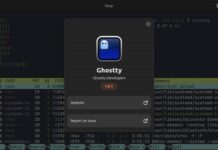Netlink is a Linux kernel socket interface, which is used for inter-process communication between the user space and the kernel, and also between different user space processes. It reduces dependence on system calls, ioctls and proc files. Netlink also helps preserve kernel purity.
There are various ways by which processes in the user space can communicate with the kernel. These are system calls, ioctl and the proc file system. The problem with system calls is that they are linked statically to kernel code. So, any new feature that is to be provided has to be compiled with the kernel, but with dynamic linking modules such as device drivers, any feature that these modules want to provide cannot always be preconfigured as a system call. Similarly, for every new feature, it is hard to provide communication through the file system. All these communication mechanisms also require that the processes initiate the communication the kernel cannot initiate the communication.
Netlink socket
Netlink socket is a communication mechanism used between the user space processes and also for communication between processes and the kernel. It can also be used for communication between user space threads and the kernel. It is a full duplex communication mechanism, that is, the kernel itself can initiate the communication. One of the advantages of this mechanism is that, in the user space, popular socket APIs that software programmers are familiar with are used for Netlink communication, so no new study is required. Netlink sockets are easier to add than system calls, ioctls and proc filesall of which will start polluting the kernel. If these are added for every new feature, then later on, it becomes difficult to remove these features — a problem kernel developers are facing currently in the case of the proc file system. In case of Netlink sockets, only a protocol type macro needs to be inserted in the netlink.h file, which resides in include/uapi/linux/netlink.h, and processes and the kernel can start communicating immediately through the socket API. Netlink socket is an asynchronous communication method, that is, it queues the messages to be sent in the receivers Netlink queue. One of the features of a Netlink socket is that it also supports multicast communication, i.e., one process can send a message to a Netlink group address, and many processes can listen on this group address. Since in the user space it is implemented through the socket API, this is an easy-to-use communication mechanism.
The basics of Netlink sockets
To use Netlink sockets in code, a standard socket API is used, which is as follows:
int socket(int domain, int type, int protocol);
Here, domain specifies the protocol family used for communication which is defined in sys/socket.h; domain in the case of Netlink is AF_NETLINK.
type specifies the way in which communication is done. In the case of Netlink, SOCK_RAW or SOCK_DGRAM can be used.
protocol specifies which Netlink feature is to be used. Various features are specified in include/uapi/linux/netlink.h, which are NETLINK_GENERIC, NETLINK_ROUTE,
NETLINK_FIREWALL, etc. You can also add a custom Netlink protocol easily by adding the macro in this file.
For each Netlink protocol type, up to 32 multicast groups can be specified in code. A multicast group in Netlink is a 32-bit bitmask, where each bit represents a group. Using this multicast feature, multiple processes and kernel modules can communicate with each other with a lesser number of system calls.
To understand Netlink sockets in the user space, the following data structures need to be understood.
struct sockaddr_nl;
struct nlmsghdr;
struct iovec;
struct msghdr;
struct sockaddr_nl (include/uapi/linux/netlink.h)
{
__kernel_sa_family_t nl_family;
unsigned short nl_pad;
__u32 nl_pid;
__u32 nl_groups;
};
In the above code, lets look at what certain terms stand for.
- nl_family: This is the protocol family to be used, which is AF_NETLINK.
- nl_pad: This is used for padding.
- nl_pid: This is the identification or the local address of the process. It is used if a process wants to send a unicast message to other processes or the kernel.
- nl_groups: This is a 32-bit bitmask used for multicast communication.
- nl_pid can be the PID of the process, which can be initialised as follows:
struct sockaddr_nl addr; addr.nl_pid = getpid();
If in a process, each thread wants its own Netlink socket, then nl_pid can be initialised to:
addr.nl_pid = pthread_self() << 16 | getpid();
or it can be initialised to simple numbers as:
addr.nl_pid = 1;
Or any algorithm can be used to assign it a unique value.
nl_groups are used for multicast communication. Each bit in this field is a multicast address. Any process which needs to listen on a particular group should set the bit.
As an example, if a process wants to listen on multicast addresses 3 and 5, then the bits are stored as follows:
addr.nl_groups = 1<<3 | 1<<5;
If, for example, a process wants to send data to multicast group 3, then it will initialise the nl_groups field as follows:
addr.nl_groups = 1 << 3;
If the process wants to send to both the 3 and 5 groups, then nl_groups will be initialised as follows:
addr.nl_groups = 1<<3 | 1<<5;
nl_pid is used to identify a single process or kernel and nl_groups is used to identify multiple processes or kernel modules, where nl_pid = 0 is a special address, which is the kernel address.
The kernel requires each Netlink message to include the Netlink message header. Thus a Netlink message is a combination of a message header and message payload. An application allocates a buffer long enough to store both header and payload. The starting of the buffer holds the Netlink message header and it is followed by the payload. So just by typecasting the buffer address with the header structure, the header can be accessed, after which there is the payload. The header structure (include/uapi/linux/netlink.h) is as follows:
struct nlmsghdr
{
__u32 nlmsg_len;
__u32 nlmsg_type;
__u32 nlmsg_flags;
__u32 nlmsg_seq;
__u32 nlmsg_pid;
};
In the code above, lets look at what certain terms mean:
- * nlmsg_len: This is the length of the message to be transferred, including the header length.
- * nlmsg_type: This is the type of message that is being transferred and is used by applications. This field is not used by the kernel.
- nlmsg_flags: This is used to give additional information.
- nlmsg_seq: This is the sequence number of the message and is used by applications. This field is not used by the kernel.
- nlmsg_pid: This is the identification of the process which sends the message and is used by applications. This field is not used by the kernel.
A Netlink message is a buffer that holds both the Netlink header and the Netlink payload. The buffer is passed to the Netlink core through iovec structure. The structure (include/uapi/linux/uio.h) definition is as follows:
struct iovec{
void __user *iov_base;
__kernel_size_t iov_len;
};
In the above code, iov_base holds the base address of the Netlink message buffer, and iov_len holds the length of the Netlink message buffer, which is the size of the Netlink header and payload.
Socket messages are sent through the sendmsg API, which requires the msghdr structure as a parameter. The following fields of struct msghdr are useful:
struct msghdr
{
void *msg_name;
int msg_namelen;
struct iovec *msg_iov;
__kernel_size_t msg_iovlen;
//other fields not discussed
};
In the above code
- msg_name is the base address of the struct sockaddr_nl variable, which holds information about the destination address.
- msg_namelen is the length of the structure, which is pointed by the msg_name field.
- msg_iov is the address of the iovec structure which holds the netlink message buffer.
- msg_iovlen is the length of the netlink message buffer.
Process-to-process unicast communication
Unicast sender example: The following header file needs to be included in an application:
#include <sys/socket.h> #include <linux/netlink.h>
First, the application has to create a Netlink socket, which is done through the socket API as follows:
int fd = socket(PF_NETLINK, SOCK_RAW, NETLINK_GENERIC);
After creating the Netlink socket, the application has to bind the socket with the unique address as follows:
struct sockaddr_nl src_addr; //AF_NETLINK socket protocol src_addr.nl_family = AF_NETLINK; //application unique id src_addr.nl_pid = 1; //specify not a multicast communication src_addr.nl_groups = 0; //attach socket to unique id or address bind(fd, (struct sockaddr *)&src_addr, sizeof(src_addr));
After binding the socket with the unique address, the application has to define the destination address, message header, message payload, iovec structure and send the message using the sendmsg API as follows:
//total netlink message length #define NLINK_MSG_LEN 1024 struct sockaddr_nl dest_addr; dest_addr.nl_family = AF_NETLINK; //destination process id dest_addr.nl_pid = 2; dest_addr.nl_groups = 0; //allocate buffer for netlink message which //is message header + message payload struct nlmsghdr *nlh =(struct nlmsghdr *) malloc(NLMSG_SPACE(NLINK_MSG_LEN));
Here, NLMSG_SPACE is the macro that gives an aligned length for the Netlink message.
//netlink message length nlh->nlmsg_len = NLMSG_SPACE(NLINK_MSG_LEN); //src application unique id nlh->nlmsg_pid = 1; nlh->nlmsg_flags = 0; //copy the payload to be sent strcpy(NLMSG_DATA(nlh), Hello Process);
Here, the NLMSG_DATA macro is used to access the address of the payload.
//fill the iovec structure struct iovev iov; //netlink message header base address iov.iov_base = (void *)nlh; //netlink message length iov.iov_len = nlh->nlmsg_len; //define the message header for message //sending struct msghdr msg; msg.msg_name = (void *)&dest_addr; msg.msg_namelen = sizeof(dest_addr); msg.msg_iov = &iov; msg.msg_iovlen = 1; //send the message sendmsg(fd, &msg, 0);
Unicast receive example: In case of the receiver, first the Netlink socket will be created using a socket API, as it was in the case of the sender.
Then, like the sender, the receiver will bind its socket with the unique address, which will be the same as in the case of the sender. src_addr.nl_pid should be initialised as follows:
//receiver address or id src_addr.nl_pid = 2;
dest_addr will be used to receive the data which does not need to be initialised. In case of nlmsghdr, this structure is just cleared as follows:
memset(nlh, 0, NLMSG_SPACE(NLINK_MSG_PAYLOAD));
The rest of the code will be similar to the senders code, but instead of the sendmsg API, the recvmsg API will be used as follows:
recvmsg(fd, &msg, 0);
This API will block until the message is received, after which the nlmsghdr variable nlh will get updated with the message header and payload, where the latter can be accessed as NLMSG_DATA(nlh) which will be a pointer to the payload.
Process-to-process multicast communication
In case of receivers for multicast communication, the sockaddr_nl structure should be initialised as follows:
struct sockaddr_nl src_addr; //initialize the protocol as Netlink family src_adr.nl_family = AF_NETLINK; //assign the unique id to each application, here //2 is assigned for example src_addr.nl_pid = 2; //assign multicast addresses on which the process //wants to listen, for example all the process //wants to listen on multicast address 3 and 5 src_addr.nl_groups = 1<<3 | 1<<5;
The rest of the code is similar to the unicast receiver code.
In case of a sender for multicast communication, the destination sockaddr_nl structure should be initialised as follows:
struct sockaddr_nl dest_addr; //initialize the protocol as Netlink family dest_addr.nl_family = AF_NETLINK; //suppose process wants to send multicast //message to all process with multicast //group 3 dest_addr.nl_groups = 1<<3;
Kernel Netlink implementation
The kernel space API for Netlink is different from that for user space. To create a Netlink socket in the kernel, the following API is used:
struct sock* netlink_kernel_create(int unit, void (*input)(struct sock *sock, int len));
In the above code:
- unit is the protocol type, which is defined in include/uapi/linux/netlink.h; for example, NETLINK_GENERIC.
- input is the function pointer, which is called when the application sends data to the kernel with a unit type protocol.
So to create a Netlink socket in the kernel module with NETLINK_GENERIC protocol type, netlink_kernel_create is called as follows:
struct sock* nlink
nlink = netlink_kernel_create(NETLINK_GENERIC, receive_func);
receive_func for example, is implemented as follows:
void receive_func(struct sock *sock, int len)
{
struct sk_buff *buffer;
struct nlmsghdr *nlh;
while((buffer = skb_dequeue(&buffer->receive_queue)) != NULL)
{
nlh = (struct nlmsghdr *)buffer->data;
//access the data through
//NLMSG_DATA(nlh)
}
}
receive_func function is called in the sendmsg system call context. If the task that is to be done with the received message is small, then it can be done in receive_func; but if it is not small, then it can block other system calls and can cause delays in the application. So to avoid this, kernel threads can be later used to process the message. For this purpose, the skb_recv_datagram API can be used as follows:
struct sk_buff *buffer; int error; buffer = skb_recv_datagram(nlink, 0, 0, &error); In the above code: * nlink = struct sock* variable is returned by netlink_kernel_create. * buffer = will be the buffer that will contain the Netlink message when the skb_recv_datagram wakes up.
After this call, the calling thread will block and will have to be woken up through wake_up_interruptible in receive_func callback as follows:
void receive_func(struct sock *buffer, int len)
{
// this will be wake up the thread
//which has called skb_recv_datagram
wake_up_interruptible(bufffer->sleep);
}
After the thread has woken up, data can be accessed as follows:
struct sk_buff *buffer; int error; struct nlmsghdr *nlh; //here the thread will sleep till the message //is received, after message is received //receive_func is called which will wake //up this thread buffer = skb_recv_datagram(nlink, 0, 0, &error); //access the data through buffer variable nlh = (struct nlmsghdr *)buffer->data; //access the data through NLMSG_DATA macro //in kernel printk(Message received %s\n, NLMSG_DATA(nlh));
To close the Netlink socket allocated, sock_release is called as follows:
sock_release(&nlink->socket);
where nlink is the struct sock * variable returned by netlink_kernel_create api.
For sending unicast and multicast messages from the kernel to the process, the following are the APIs:
//unicast message sending from kernel int netlink_unicast(struct sock *ssk, struct sk_buff * skb, u32 pid, int nonblock);
In the above code:
- ssk is the struct sock * returned by netlink_kernel_create.
- skb is the buffer which holds the message.
- pid is the ID or address of the process to which the message is to be sent.
- Nonblock is the variable to decide whether to block if the process is not present.
//multicast message sending from kernel int netlink_broadcast(struct sock *ssk, struct sk_buff *skb, u32 pid, u32 group, int allocation);
In the above code:
- group is the multicast group to which the message is to be sent. This is similar to the nl_groups field in the sockaddr_nl structure.
- allocation is GFP_ATOMIC if called from the interrupt context or GFP_KERNEL if called from the kernel thread. This is due to the fact that the kernel requires multiple buffer allocations to clone a multicast message.
Lets end with an example of message sending in the kernel, as follows:
#define NLINK_MSG_SIZE 1024 //allocate netlink socket struct sock *nlink = netlink_kernel_create(NETLINK_GENERIC, receive_func); //allocate socket buffer for message struct sk_buff *skb = alloc_skb(NLMSG_SPACE(NLINK_MSG_SIZE), GFP_KERNEL); //get the header pointer nlh = (struct nlmsghdr *) skb->data; //update source header parameters nlh->nlmsg_len = NLMSG_SPACE(NLINK_MSG_SIZE); //kernel id is 0 nlh->nlmsg_pid = 0; nlh->nlmsg_flags = 0; //copy the data strcpy(NLMSG_DATA(nlh), Hello); //update this if kernel belongs to //multicast group NETLINK_CB(skb).groups = 0; //kernel id is 0 NETLINK_CB(skb).pid = 0; //use this in case of unicast message NETLINK_CB(skb).dst_pid = 2; //update this in case of multicast //message with multicast address NETLINK_CB(skb).dst_groups = 0; //unicast the message to process with //process address 2 netlink_unicast(nlink, skb, 2, MSG_DONTWAIT); //use this if multicast is to be done //example is multicast address 3 //netlink_broadcast(nlink, skb, 0, 1<<3, GFP_KERNEL);
References
[1] http://qos.ittc.ku.edu/netlink/html/
[2] http://linux.die.net/man/7/netlink















































































